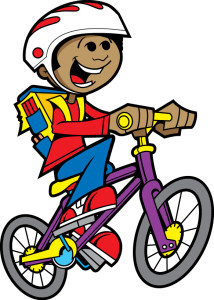Many young children end up with some injuries and accidents. Most are usually minor but it is practical to be prepared with what to do if an injury or accident is more serious.
If an accident happens
In most circumstances, it can be difficult to know when to call for an ambulance and when to bring to the child to the emergency department. If the following are present, it is vital to call an ambulance:
- Child stops breathing
- Child will not wake up
Most are usually minor but it is practical to be prepared with what to do if an injury or accident is more serious. - Child struggles to breath such as panting, breathing rapidly, becoming wheezy or the muscles under the ribcage sucks in while inhaling
- Child has a cut that bleeds persistently or gaping open
- Child experiences a fit or seizure for the first time even if he/she recovers
When to bring a child to the nearest emergency department:
- If the child has fever and sluggish despite being given ibuprofen or paracetamol
- Child ingested tablets or poison
- Child has severe abdominal pain
- Child sustained an arm or leg injury and could not use the limb
If worried about the child and unsure if medical help is needed, call for emergency assistance. If unsure whether the child should be moved, ensure that he/she is warm and then call an ambulance.
Foreign object in the ears or nose
In case the child lodges an object in the ear or nose, you have to leave it as is. Any attempt to remove it might only push it further in. Bring the child to the nearest emergency department. In case the nose is blocked, show the child how to breathe via the mouth.
What to do for cuts
If there is bleeding, firmly press on the wound using a clean cloth. If you do not have one, use your fingers. In case there is an object embedded in the wound, press around the edges instead of directly on it.
Continue to press until the bleeding stops, usually 10 minutes or more. If possible, elevate the injured limb since this can help stop the bleeding. If there is clean dressing available, leave it in place and apply another dressing or pad over it.
Burns and scalds
Right after the child ends up with a burn, place the affected area under running water to minimize the heat in the skin. Do not do this longer than 10 minutes since infants and toddlers can get too cold. In case there is no running water, immerse the burn or scald in cold water.
Use a clean cloth to cover the burn or scald to minimize the risk for infection. Depending on the severity of the burn, a doctor should be consult. The blisters will naturally burst and the raw area underneath requires a protective dressing.
What to do if a child is in shock?
If the child appears pale or feel unwell after an accident, let him/her lie down. Keep the child covered and warm. In case the child faints, keep the head down or simply lie down. The faint feeling must wear off in a minute or two.

